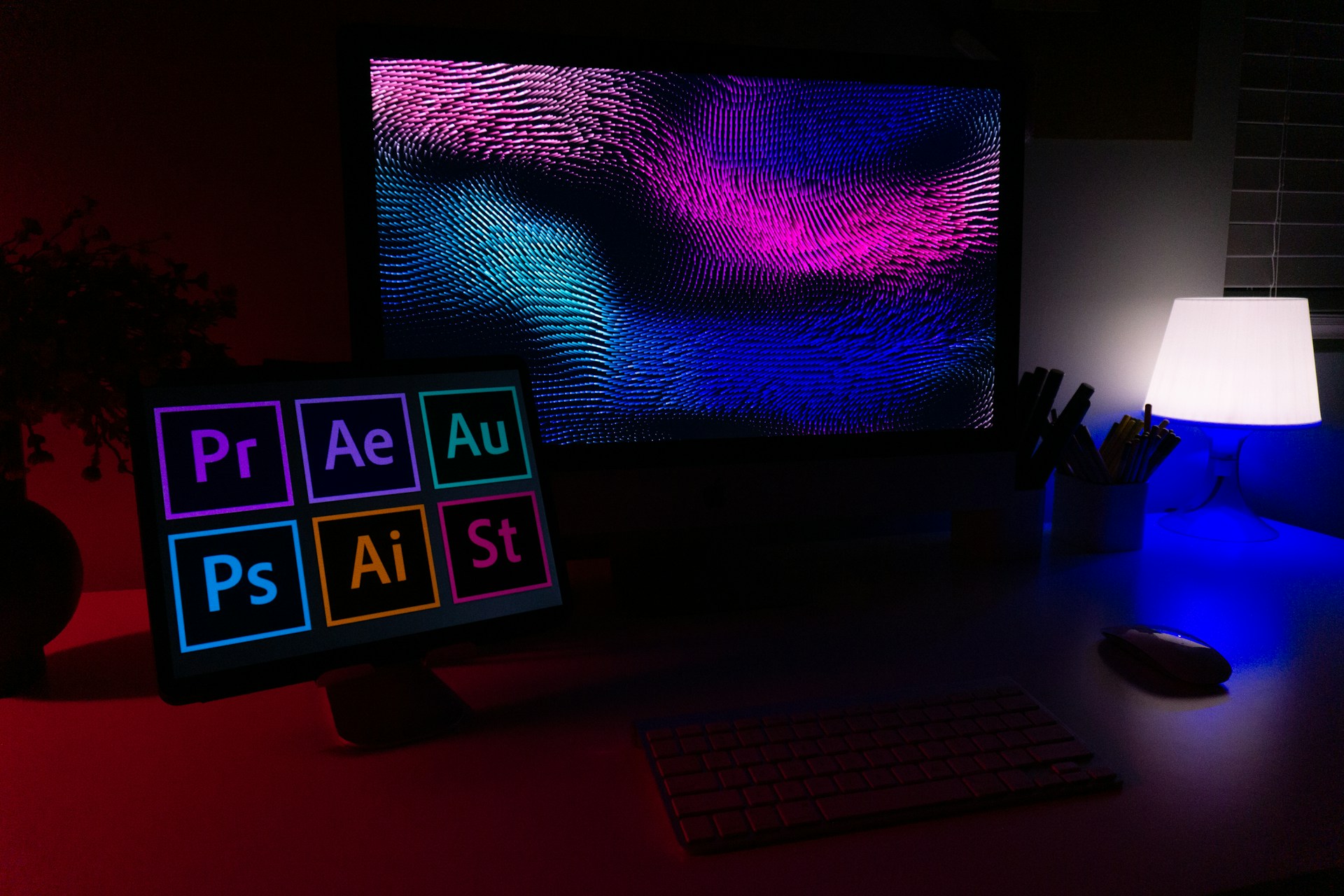Introduction
The world of graphic design is booming! With the ever-increasing demand for visually compelling content, skilled graphic designers are in high demand. But how do you get started in this exciting field? The good news is, formal education isn’t the only path to success. Best Online Courses for Graphic Design has opened doors for aspiring designers to acquire the necessary skills and knowledge from the comfort of their own homes.
This guide is designed for you, the creative individual who wants to embark on a journey in graphic design. Whether you’re a complete beginner or looking to refine your existing skills, online courses offer a flexible and affordable learning solution. Here, we’ll explore the benefits of online learning, key factors to consider when choosing a course, and curate a list of top-rated programs to kickstart your graphic design education.
The Power of Online Learning
Traditional design schools can be expensive and time-consuming. Online courses offer a compelling alternative:
a. Flexibility:
Learn at your own pace, anytime, anywhere. Fit your studies around your busy schedule.
b. Affordability:
Online courses are often significantly cheaper than traditional education. Many platforms offer free introductory lessons or trials.
c. Self-Paced Learning:
Work through course materials at your own speed, revisit lessons as needed, and master concepts before moving on.
d. Variety of Options:
Find courses catering to all skill levels, from beginner fundamentals to advanced design techniques.
Choosing the Right Online Course
With so many online courses available, it’s important to choose the one that aligns with your learning goals and preferences. Here’s what to consider:
a. Curriculum:
Look for a well-structured curriculum covering the core design principles like color theory, typography, and layout. Ensure the course content matches your design interests (e.g., logo design, web design, etc.).
b. Instructor Expertise:
A strong instructor makes all the difference. Choose courses led by experienced designers with industry knowledge and a passion for teaching.
c. Project-Based Learning:
Hands-on learning is crucial. Opt for courses that incorporate projects where you can apply your newly acquired skills and build a design portfolio.
d. Learning Resources:
Additional resources like downloadable templates, practice files, or access to a community forum can enhance the learning experience.
e. Student Reviews and Ratings:
Read student reviews and ratings to get real-world insights into the course’s effectiveness and teaching style.
Popular Platforms for Online Graphic Design Courses
Now that you know what to look for, let’s explore some of the most popular platforms offering Best Online Courses for Graphic Design:
a. Udemy:
Udemy boasts a vast library of graphic design courses for all skill levels, covering a wide range of software programs like Adobe Photoshop, Illustrator, and InDesign. From beginner basics to advanced techniques, you’ll find a course to fit your needs.
b. Skillshare:
Skillshare focuses on shorter, project-based classes ideal for learning specific graphic design skills. Hone your typography skills in a dedicated class or learn the ropes of logo design in a bite-sized course.
c. Coursera:
Partnering with prestigious universities and design schools, Coursera offers high-quality specialized courses in various graphic design areas. Pursue a full specialization or take individual courses to deepen your knowledge in specific areas.
d. CreativeLive:
CreativeLive stands out with its unique format of live workshops and in-depth classes led by industry professionals. Gain real-time insights and ask questions directly to experienced designers.
e. Other Platforms:
Don’t forget to explore other platforms like LinkedIn Learning, The Futur, and Envato Tuts+. Each platform offers its own strengths and specializes in specific design areas.
Understanding Graphic Design Course Categories
The world of graphic design is vast. Courses can be broadly categorized as follows:
Graphic Design Fundamentals:
Build a solid foundation with courses covering design principles, color theory, typography, and layout basics. These fundamental skills are essential for any aspiring graphic designer.
Software-Specific Courses:
Master specific design software like Adobe Photoshop, Illustrator, InDesign, or Figma. These in-depth courses will equip you with the technical skills to create professional-looking designs.
Specialization Courses:
Dive deeper into specific design areas like logo design, branding, UI/UX design, or web design. These specialized courses can help you carve your niche within the graphic design field.
Advanced Techniques:
For experienced learners, advanced courses delve into topics like animation, motion graphics, or 3D design, adding new dimensions to your design skillset.
Free vs. Paid Courses:
While free introductory courses offer a taste of graphic design, paid courses often provide more in-depth content, project feedback from instructors, and certificates of completion that can enhance your portfolio and job prospects.
Top Recommended Online Courses for Graphic Design
Now that you’re armed with the knowledge of what to look for and where to find them, let’s explore some of the top-rated online graphic design courses across different platforms and specializations:
Create a Strong Graphic Design Portfolio: From Beginner to Pro (Udemy):
Ideal for beginners, this course takes you through the design process, introduces software basics like Adobe Photoshop and Illustrator, and guides you on building a strong portfolio to showcase your skills.
Graphic Design Specialization (Coursera by California Institute of the Arts):
This comprehensive specialization by the prestigious California Institute of the Arts is perfect for serious learners. Dive deep into design principles, typography, layout, and brand identity creation, gaining a solid foundation in graphic design.
Learn Adobe Photoshop & Illustrator CC for Beginners (Skillshare):
A fantastic starting point for mastering the industry-standard Adobe Creative Suite. Learn the basics of both Photoshop and Illustrator, equipping yourself with the essential tools for creating impactful visuals.
UI/UX Design Specialization (Coursera by Google):
If you’re interested in the exciting world of user interface (UI) and user experience (UX) design, this Google-developed specialization is a top choice. Learn how to design user-centered interfaces for websites and applications.
Logo Design Mastery: From Concept to Client (Udemy):
Aspiring logo designers, this course is for you! Learn the entire logo design process, from brainstorming and sketching to creating polished logos in Adobe Illustrator, and prepare yourself to impress clients.
Additional Course Recommendations:
Here are some additional highly-rated courses to broaden your horizons:
Typography for Designers: From Chaos to Clarity (Skillshare)
Master the art of typography, including choosing fonts, creating hierarchy, and using typography effectively in your designs. (Skillshare)
Mastering Figma: UI/UX Design Essentials (Udemy)
This course provides a comprehensive introduction to Figma, a popular UI/UX design software. Learn its functionalities and create user-friendly interfaces. (Udemy)
Branding: Strategy & Design (Coursera by University of Colorado Boulder)
Explore the world of branding, from developing brand strategy to crafting a strong brand identity with a memorable logo and consistent visual language. (Coursera)
Motion Graphics Fundamentals (CreativeLive):
Taught by an industry professional, this live workshop dives into the basics of motion graphics using Adobe After Effects. Add animation skills to your design repertoire and create dynamic visuals. (CreativeLive)
Freelance Graphic Design: Get Paid Doing What You Love (Skillshare):
Thinking of going freelance? This course offers practical guidance on establishing your freelance business, including finding clients, setting rates, and managing projects. (Skillshare)
Advanced Web Design: Responsive Layouts (Udemy):
Delve into the world of responsive web design, ensuring your websites adapt seamlessly to different screen sizes and devices. (Udemy)
Design Thinking: The Beginner’s Guide (LinkedIn Learning):
This course introduces the human-centered design process of design thinking. Learn how to approach problems creatively and develop solutions that meet user needs. (LinkedIn Learning)
Remember, this is just a starting point!
Explore different platforms and course categories to find the perfect fit for your learning goals and interests.
Conclusion
The exciting world of graphic design awaits! With the right online course and a dedication to learning, you can develop the skills and knowledge to embark on a fulfilling creative career. Don’t be afraid to experiment, explore different design areas, and keep practicing.
In addition to online courses, consider supplementing your learning with design blogs, podcasts, and online communities. Surround yourself with inspiration and connect with other aspiring designers. With passion, perseverance, and the right resources, you can turn your design dreams into reality.




